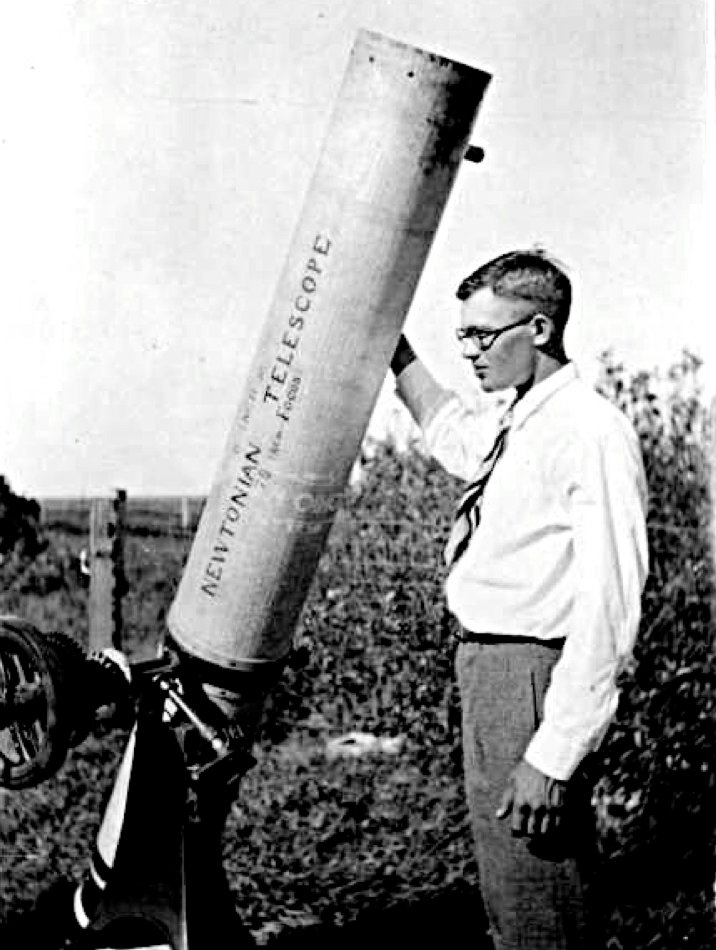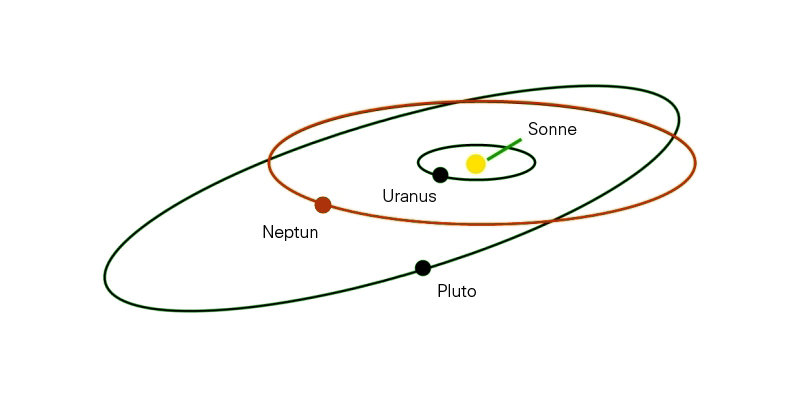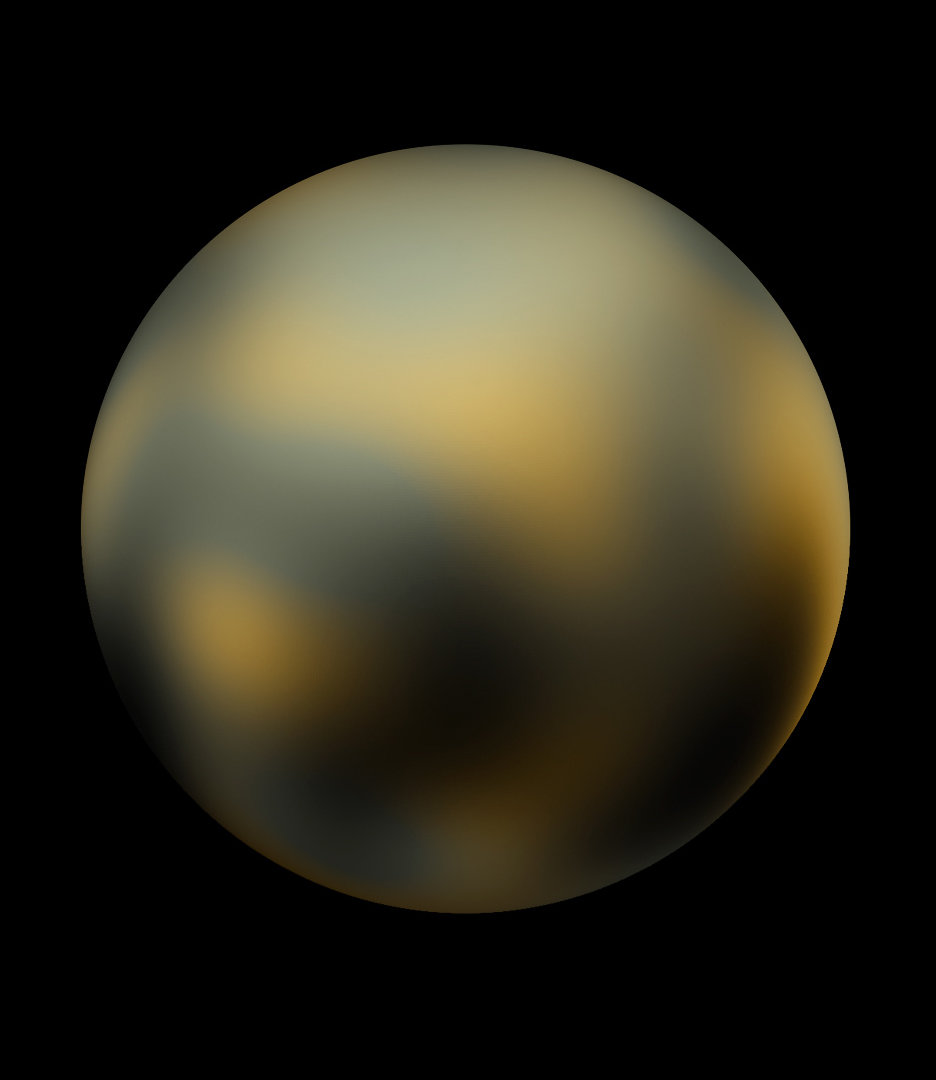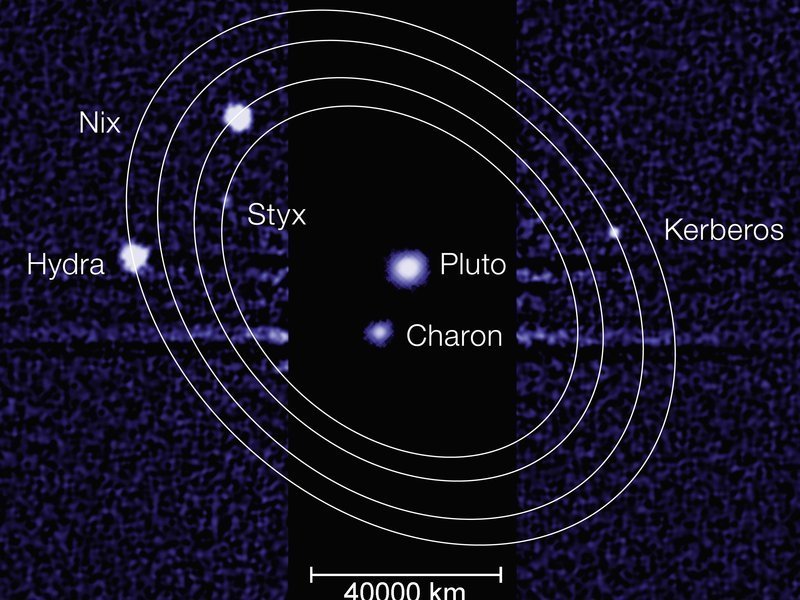Pluto – a dwarf in the darkness
The celestial body seems to be Ceres’ big brother and will soon receive a visit from a space probe
The solar system is teeming with tiny rocks – but officially there are only five dwarfs: Ceres, Eris, Haumea, Makemake and Pluto. While the Dawn space probe is currently exploring Ceres, the New Horizons mission will hurtle past big brother Pluto on 14 July and record data and images of this faraway world en passant. The researchers will thus have a chance to more closely investigate two very different, distant dwarf planets.
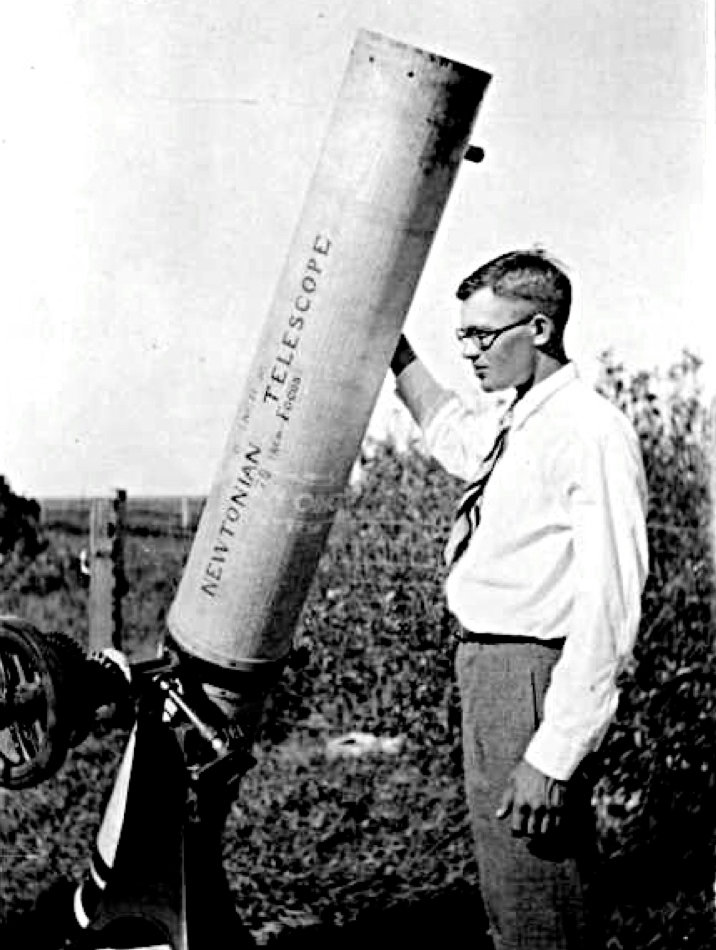
The discoverer: Clyde Tombaugh, son of a farmer, was an enthusiastic stargazer. In 1930, while working at the Lowell Observatory in the US state of Arizona, he discovered Pluto, which was considered to be the ninth planet in the solar system until 2006.
Text: Helmut Hornung
In addition to seven scientific instruments, the New Horizons space probe is carrying a special cargo on board: a few grams of the ashes of the astronomer Clyde Tombaugh, who discovered Pluto in 1930 and died in 1997. Tombaugh, son of a farmer, was an enthusiastic stargazer. With his self-made telescope he observed Mars and Jupiter in his youth and sent drawings of these planets to the director of the Lowell Observatory in the US state of Arizona. The latter was so taken with these works that he offered Tombaugh a job.
The new recruit went about his task of tracking down “planet X” with zeal, not least because Percival Lowell, the founder of the observatory, had not only believed in the existence of Martians, but also in an as yet undiscovered celestial body beyond Neptune’s orbit. On the afternoon of 18 February 1930, Clyde Tombaugh compared photographic plates of a region in the Gemini constellation. His attention was caught by a tiny, weak spot of light, which had shifted 3.5 millimetres within three days: “planet X”.
On 14 March 1930, the newspapers reported his sensational find. On the very same day, a librarian from Oxford wrote to the English astronomer Herbert Hall Turner that his eleven-year-old granddaughter had heard of the discovery and spontaneously proposed Pluto as its name. Turner did in fact pass on this idea to the Lowell Observatory – and the astronomers there agreed immediately.
The name fits in well with the mythological names of the other planets: Pluto is the Roman god of the underworld, who the Greeks called Hades or Aidoneos. Moreover, the first two letters are also the initials of the observatory founder, Percival Lowell. The woman who originally thought up the name was Venetia Phair, née Burney. She lived to see the demotion of her “godchild” to a dwarf planet in 2006 – and passed away in April 2009 aged 90.
Owing to its great distance – it is 5.9 billion kilometres from the Sun on average, 40 times further than Earth – Pluto is an uncharted region on the astronomical map. Even in opposition, when it is closest to Earth, the distance from Earth to the dwarf planet is still around 4.7 billion kilometres. The reflected sunlight from Pluto needs no less than a full four hours to reach us.
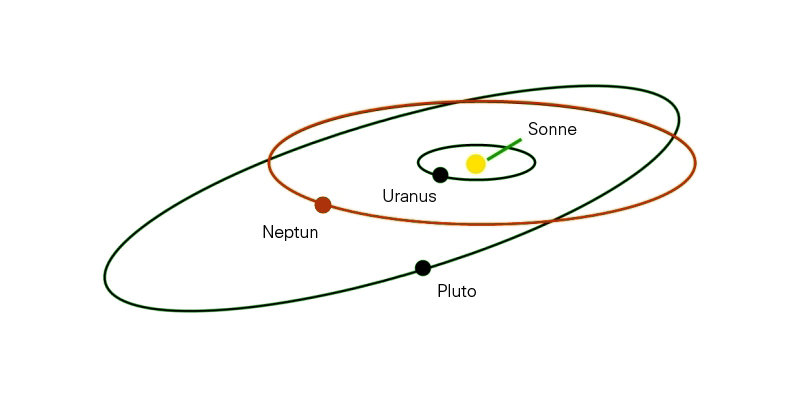
Elliptical orbit: Pluto travels around the Sun on an extremely elliptical, strongly inclined orbit roughly once every 248 years.
Pluto requires just about 248 terrestrial years to orbit the Sun once. Its orbit has a large inclination to the plane of the planetary system. In addition, gravity has adjusted the orbital period of Pluto and its neighbour Neptune to a ratio of two to three. These characteristics are also shared by the Plutinos – small bodies at the edge of the solar system that were discovered at the beginning of the 1990s.
The dwarf planet is around 2,390 kilometres in diameter. It rotates about its axis once every 6 days, 9 hours and 18 minutes. In 1988, researchers discovered a thin methane atmosphere and estimate its thickness to be at least 100 kilometres. Furthermore, they detected carbon monoxide in its atmosphere.
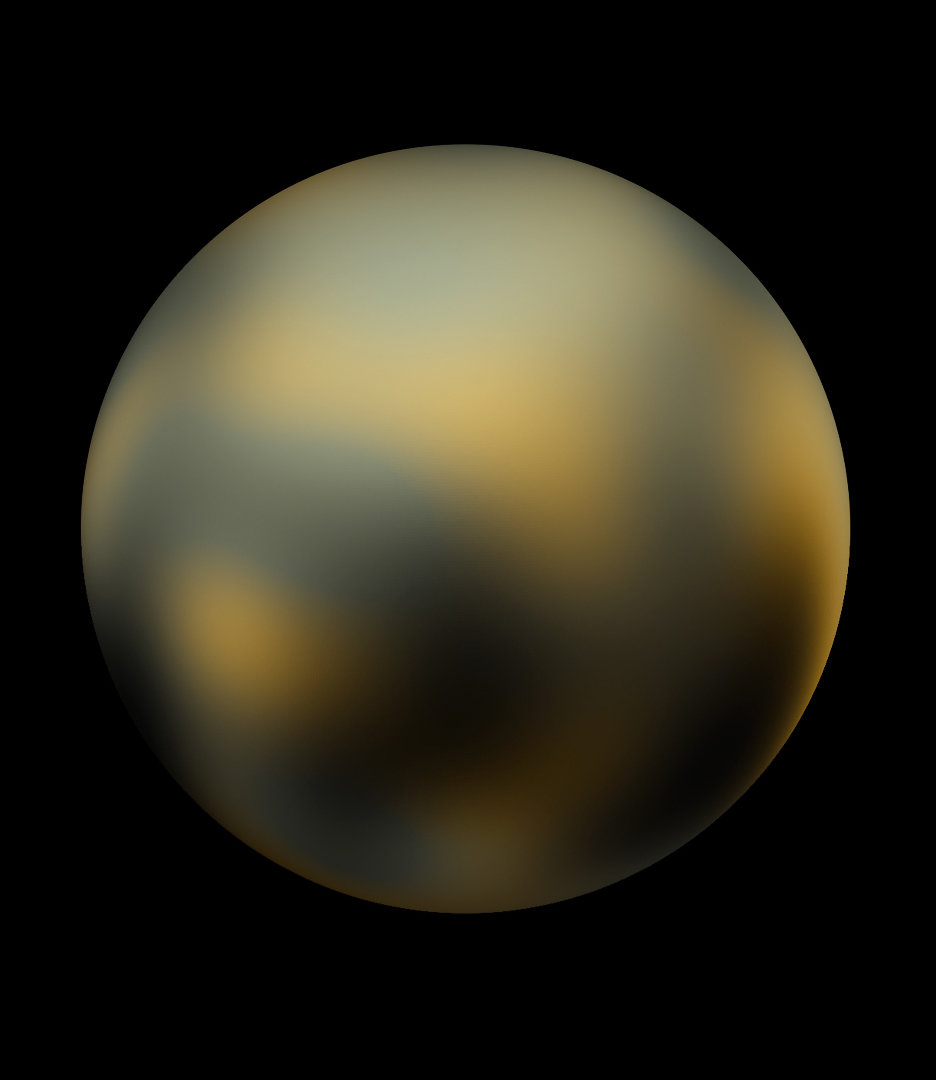
Mysterious face: In this image taken by the Hubble space telescope, light and dark shadows on the glimmering reddish surface of Pluto are the only things that can be recognised. The scientists assume that its thin atmosphere freezes completely in winter, falls as snow and turns into methane ice on the ground.
Observations with a radio telescope on Hawaii showed that the atmosphere extends to a height of more than 3,000 kilometres. Owing to its strongly elliptical orbit – between 1979 and 1999 it even found itself inside Neptune’s orbit – Pluto is subject to considerable variation of the solar insolation.
A few years ago, Hermann Böhnhardt and Silvia Protopapa from the Max Planck Institute for Solar System Research found initial indications that the atmosphere could freeze completely during Pluto’s winter, fall as snow onto the icy, shimmering reddish surface and become methane ice. For their observations, the scientists used the Very Large Telescope of the European Southern Observatory (ESO) in Chile.
Pluto’s structure is most likely similar to that of its little sister Ceres: It has a rocky core, which, in comparison to Ceres, should be relatively small. This is surrounded by a mantle of ice, which is covered in turn by a crust of frozen methane and nitrogen. The surface exhibits different colourations. Although basically reddish in colour, there are evidently isolated spots that are white as snow, as well as regions which are black as soot. Overall, Pluto probably consists of approximately two-thirds rock and one-third water ice.
The scientists are eagerly awaiting the results of the two missions, Dawn and New Horizons. A direct comparison of the data could clarify the question, among others, of whether Pluto and Ceres really are related to each other and have a similar genesis, although they orbit the Sun at locations in the planetary system that are far removed from each other.
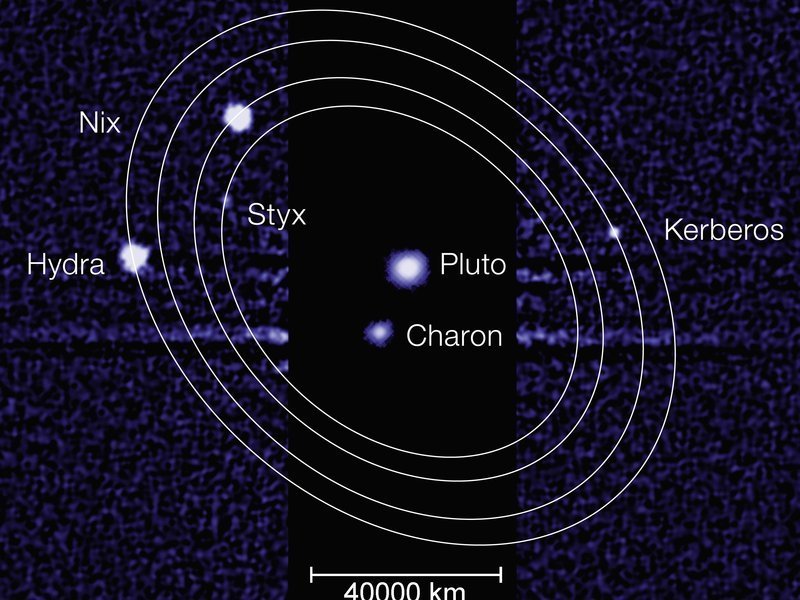
Lord of the moons: Pluto’s moon Charon was discovered in 1978. Its diameter of 1,207 kilometres makes it half the size of its mother planet. The astronomers meanwhile know of four further, potato-shaped moons, only a few kilometres across: Nix, Hydra, Kerberos and Styx.
Pluto’s moon Charon was discovered in 1978. With a diameter of 1,207 kilometres, it is half the size of its mother planet. The astronomers have meanwhile discovered four further, potato-shaped moons, only a few kilometres across: Nix, Hydra, Kerberos and Styx. It is probable, however, that several more, as yet unknown rocks orbit the dwarf planet.
The god of the underworld and his realm literally lie in darkness. This is set to change on 14 July 2015. On this day, the New Horizons space probe will hurtle past Pluto at a distance of 9,600 kilometres and past Charon, its largest moon, at a distance of 27,000 kilometres. It will be a very fleeting rendezvous, as the probe, which was launched in January 2006, flies at more than 50,000 kilometres per hour – steering a course into an orbit and thus a longer stay is out of the question at this breakneck speed. A packed, scientific observation programme must run automatically in only a few short hours. Due to the long travel time of the signals, the scientists on Earth cannot intervene.
New Horizons is carrying seven instruments on board, including LORRI, the Long Range Reconnaissance Imager, which comprises a 21-centimetre-diameter telescope and a highly sensitive CCD camera. This electronic eye is expected to provide images on which 25-metre details will appear. Other detectors are to identify the chemical composition of Pluto and Charon, detect molecules such as methane, measure the pressure and temperature of the wafer-thin atmosphere and determine the density of the interplanetary dust.
The journey of the compact car-sized scout won’t end at the dwarf planet. After all, beyond Pluto’s realm, new horizons open up, beginning with the Kuiper belt, which is inhabited by countless space rocks. This is the largest known structure from the nascent phase of the solar system – a flat, annular accumulation of around 100,000 objects of at least 100 kilometres in size and countless smaller pieces of debris. The Kuiper belt is located beyond Neptune’s orbit at a distance of 4.5 to 7.5 billion kilometres from the Sun. New Horizons is to head towards at least two vagabonds in the Kuiper belt. It will then go by a new name - Icy Hunters.
